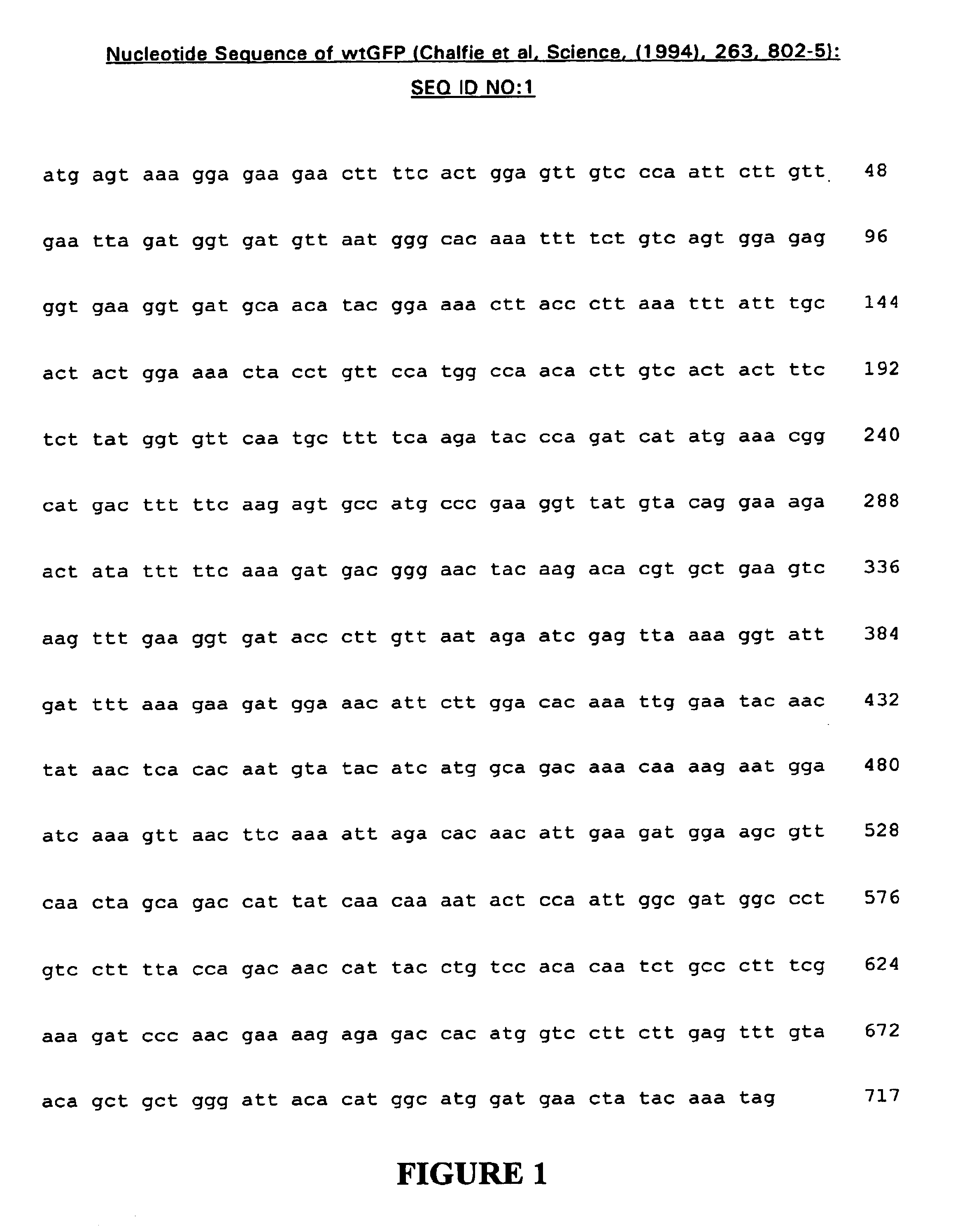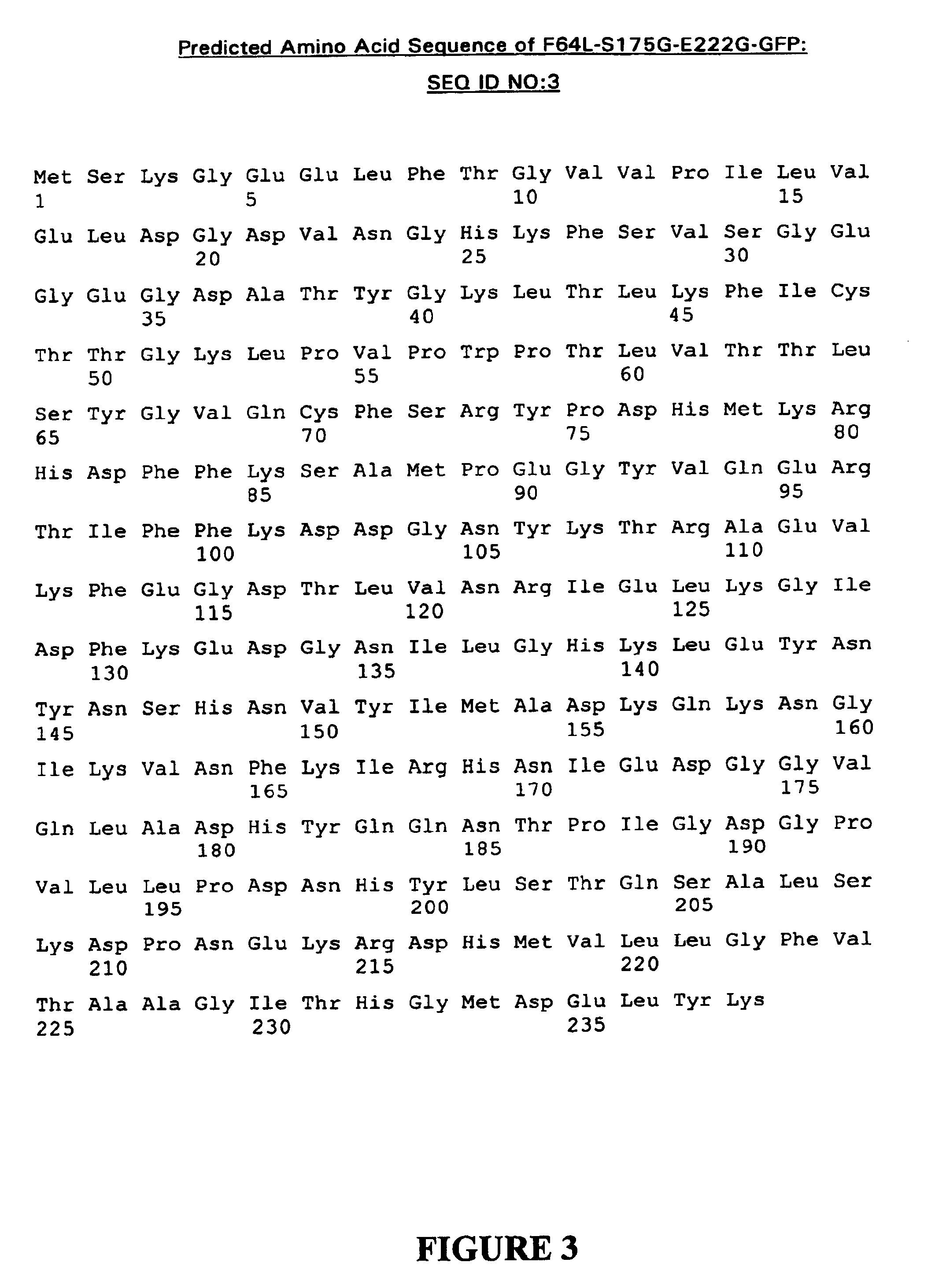Fluorescent proteins
- Summary
- Abstract
- Description
- Claims
- Application Information
AI Technical Summary
Benefits of technology
Problems solved by technology
Method used
Image
Examples
examples
1. Cloning of GFP Gene and Template Vector Construction
[0118]The GFP gene used in the present study was contained within the plasmid pGFP (Chalfie et al., Science, (1994), 263, 802-805; GenBank accession number U17997) obtained from Clontech Laboratories Inc. (Palo Alto, Calif., USA). The gene was amplified by PCR using Pfu polymerase (Promega, Madison, Wis., USA) according to recognised protocols (Saiki et al., Science, (1988), 239, 487-491). The sequences of primers used were:
[0119]
GFP-1SEQ ID NO.55′-ggtacgggccgccaccatgagtaaaggagaagaacttttcacGFP-2SEQ ID NO.65′-ggtacgggttaaccggttttgtatagttcatccatgGFP-3SEQ ID NO.75′-ggtacgggccgccaccatgggatccaaaggagaagaacttttcac
[0120]Primer GFP-1 exhibits homology to the 5′ region of the GFP gene and contains a partial Kozak site (Kozak, M, Cell, (1986), 44, 283) prior to the start codon for efficient initiation of translation in mammalian systems. Primer GFP-2 exhibits homology to the 3′ region of the GFP gene and contains an additional AgeI restric...
PUM
| Property | Measurement | Unit |
|---|---|---|
| Fluorescence | aaaaa | aaaaa |
Abstract
Description
Claims
Application Information
 Login to View More
Login to View More - R&D
- Intellectual Property
- Life Sciences
- Materials
- Tech Scout
- Unparalleled Data Quality
- Higher Quality Content
- 60% Fewer Hallucinations
Browse by: Latest US Patents, China's latest patents, Technical Efficacy Thesaurus, Application Domain, Technology Topic, Popular Technical Reports.
© 2025 PatSnap. All rights reserved.Legal|Privacy policy|Modern Slavery Act Transparency Statement|Sitemap|About US| Contact US: help@patsnap.com



